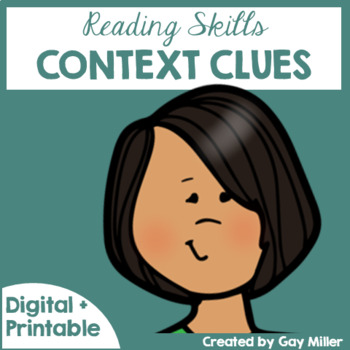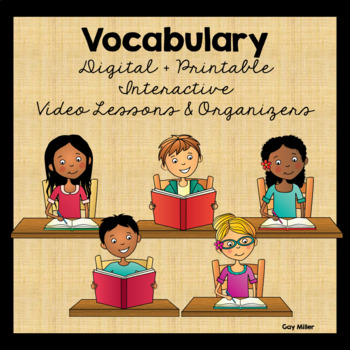
For upper elementary students, understanding poetry can be both exciting and challenging. One powerful strategy for uncovering meaning in poetry is using context clues. This post features six engaging activities that help students build vocabulary, strengthen reading comprehension, and develop critical thinking—all while enjoying the richness of poetry.
All six activities are included in a free handout that contains the printable materials you’ll need.
Context Clues Activities
Activity 1: Cloze Poems and Definitions

Cloze poems offer an interactive way for students to improve their vocabulary skills. In this activity, students complete poems by filling the blanks with words from a word bank. They will then match these words to their definitions in a chart to reinforce their understanding. The handout includes activities using these favorite poems:
- “Stopping by Woods on a Snowy Evening” by Robert Frost
- “I Wandered Lonely as a Cloud” by William Wordsworth
Activity 2: Poetry Scavenger Hunt

The Poetry Scavenger Hunt takes a different twist for students to practice using context clues.
These poems were selected because of their rich imagery and themes:
- “The Village Blacksmith” by Henry Wadsworth Longfellow
- “The Great Figure” by William Carlos Williams
- “The New Colossus” by Emma Lazarus
Provide students with the handout containing the words to these poems and a list of target words. Ask students to locate the words within the text. Students sharpen their critical thinking and vocabulary skills by analyzing context to determine the meanings of the words.
Activity 3: Synonym Search: Exploring the Language and Meaning of Poetry

Synonyms can enrich students’ vocabulary, as well as help avoid repetition and boredom. The activity helps students understand the context and tone of the poem “My Shadow” by Robert Louis Stevenson. It is about a child’s playful and curious relationship with his shadow.
On the handout, students read the poem and examine the bold words.
For each keyword, students write a synonym that fits the context and meaning of the poem. They can use a thesaurus or a dictionary if they need help.
The activity aims to enhance students’ language, comprehension, and critical thinking skills.
Activity 4: Understanding the Meaning of Words in “The Wind” by Robert Louis Stevenson

Students read “The Wind” by Robert Louis Stevenson, then write explanations of bolded words using context from the poem.
The activity consists of the following steps:
- The teacher will provide the students with the handout containing the poem “The Wind” by Robert Louis Stevenson, with some words highlighted in bold.
- Students will write sentences that explain what the bold words mean using context clues from the poem.
The activity aims to enhance the students’ language, comprehension, and critical thinking skills.
Activity 5: Trail Game: Exploring “The Tyger” by William Blake

Students advance through the lines of William Blake’s “The Tyger” by answering multiple-choice questions based on context clues. As they advance along the trail, they figure out the meanings of words and make connections. This interactive game transforms poetry into an exciting adventure.
Activity 6: Visual Context Clues

Students match illustrated cards (featuring visuals like “streams,” “wild things,” and “frightening sights”) with descriptive language from poems. This multimodal activity helps students visualize meaning while reinforcing word-picture associations.
📥 Grab the Free Handout
All activities—plus word lists, definitions, templates, and more—are included in one downloadable PDF.
Engaging upper elementary students with context clues in poetry boosts their language skills and unveils the beauty of poetic expression. Activities like cloze poems, scavenger hunts, trail games, and visual context clues encourage critical thinking, promote close reading, and foster a deeper appreciation for the artistry of poetry.
See the products that inspired this post.

This unit contains nine video lessons with organizers plus seven activities to practice the skills taught.

Check out Vocabulary Digital + Printable Interactive Video Lessons & Organizers on TPT. This unit includes the videos and organizers without practice. They are great for unit hooks or reviews.


